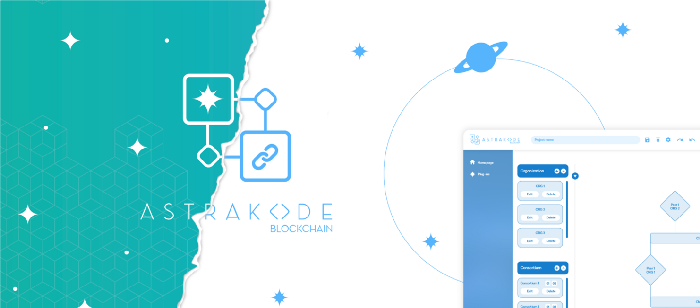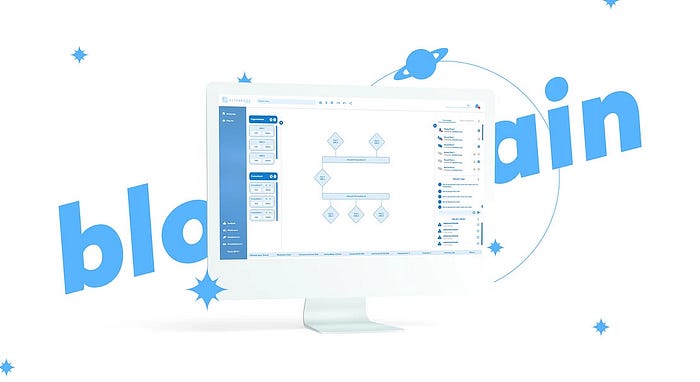Hyperledger Composer deprecated. Now it’s time for AstraKode!

The Hyperledger family
Hyperledger is the result of a collaborative effort to contribute, on the one hand, to the development and evolution of blockchain technology in general and, on the other, to the strengthening of synergies between sectors, developing distributed networks, and paying great attention to improving the performance and reliability of these systems.
This is a set of frameworks (such as Fabric or Sawtooth), tools (including Cello, Explorer, and Composer), and open-source libraries (such as Ursa), intended for enterprise-level blockchain implementations.
The Linux Foundation announced its birth in December 2015, while the founding members and the executive director, Brian Behlendorf, formalized it in the first months of the following year.
Numerous and varied realities participated in the initiative. IT companies such as IBM, Cisco, Fujitsu, Intel, SAP, Samsung, and Huawei; financial services providers including Deutsche Börse, American Express, and J.P. Morgan; academic institutions such as Cambridge Centre for Alternative Finance and Blockchain at Columbia, and many others. Today the community can count on the contribution of more than 100 members.
Hyperledger Fabric and Hyperledger Composer

Hyperledger Fabric is a DL (Distributed Ledger) platform initially conceived by Tamas Blummer and Christopher Ferris (IBM) and intended for enterprise level use. [1] The mission of the project is to allow associations, individual companies, consortia, etc. to create their own network that can be highly scalable and, at the same time, with a flexible degree of authorization. The ultimate goal is to offer an alternative to public blockchain platforms, such as Ethereum, without governance and privacy. Those who wish to maintain a certain degree of control over network management and protect their transactions by making them private and not visible to the entire network but only to some members are the target audience for Fabric.
The so-called “endorsers”, i.e. nodes enabled for governance operations such as the validation of individual transactions or the entry of a new member, through Fabric have two important features at their disposal:
- “channels”: thanks to which it is possible to hide a transaction (or rather the smart contract that defines such an agreement) by isolating it within a container, making it visible and accessible only to specific audiences;
- “private data”: if you want to keep the information private while sharing hashes as proof of the transaction on the ledger. [2]
Additionally, the platform offers various components such as membership mechanisms, consensus mechanisms, and membership services in plug-and-play mode, freeing the user from the burden of configuration or installation.
Finally, the platform has a modular architecture that is very versatile and can adapt to the most diverse business use cases.
Hyperledger Composer has been an open-source tool oriented to facilitate the creation of networks and the writing of smart contracts (called “chaincode”) on Fabric.
Written using JavaScript and developed with the contribution of IBM, the Composer collected various rapid prototyping tools to easily manage the definition of the network and its logic. The work could then be exported and, through command-line tools, transformed into Fabric architecture and logic. More in detail, the Composer was equipped with 3 macro-features:
- Modeling language called “CTO” oriented to model definition and business logic.
- Command-line tools to import Composer processes and transform them into Fabric network and logic.
- Playground functionality for rapid prototyping and approach to Fabric tools and technology [3].
Because Fabric technology is not easy to approach and often subject to evolution, since its release the Composer has aroused great interest in the community. Since August 29, 2019, the project has deprecated due to increasingly irreconcilable differences between the Composer modeling approach and Fabric technology.
AKB, a new way of doing Blockchain
By typing the word “blockchain” within any search engine, most of the results shown on the first page (and probably also in the following) quote phrases such as: “what is it”, “how it works”, “how to use it”, “what is it for”, etc.. Although more than a decade has passed since its birth, there is still a widespread lack of knowledge of technology, linked to the fact that it has not yet reached a full level of maturity and, above all, because of its complexity.
This was the starting point from which the Composer project came to life (in addition to bringing users closer to the Fabric implementation), and it was the Composer that served as a source of inspiration for AstraKode Blockchain (AKB).
This platform aims to meet the main need of assisting and guiding the user in generating a new blockchain project, making the experience as intuitive and easy as possible. But let’s proceed calmly and take one step at a time… What is AstraKode Blockchain? AKB is a PaaS (Platform as a Service) solution through which it will be possible to create and develop blockchain networks and smart contracts in an easy way thanks to a low-code approach.
This results in the availability of two separate yet integrated development environments:
- Network Composer, through which it will be possible to design, customize and deploy a blockchain network (initially Hyperledger Fabric, then include other widely used implementations such as Corda and Quorum).
- IDE Smart Contracts (SC IDE), within which it will be possible to develop smart contracts ready to be distributed on the network (through a dedicated function within the Network Composer), thus establishing its logic.
Consistent with the low-code paradigm, these environments will consist of configurable graphical components and guided processes able to abstract and automate many complex aspects related to traditional programming, including self-documentation and network validation. Moreover, the presence of a dedicated community will act as additional support to the user both in a structured form (guides and other resources for documentation and training) and in a less structured form (forum).
The “low-code + community” combination represents a potentially winning formula to give the opportunity — not only to professional developers but also to less experienced users who are passionate about blockchain — to bring their project to life.
When drawing a comparison between AKB with the aforementioned Composer, the latter presents a number of critical issues that the former remedies:
- the absence of a graphical interface to design and develop both the network and its logic (smart contract);
- an inflexible level of network configuration;
- the absence of low-code tools to facilitate and make the development activity more intuitive.

AstraKode stands as both spiritual and material heir to the Composer, aspiring, unlike the latter, to allow the creation of solutions with a high degree of customization “production grade”, while at the same time departing from any other solution thanks to its low-code approach and its ability to provide tools for both the development of a blockchain network and its logic.
In addition, its low-code approach translates into high flexibility of the platform, able to adapt to different use cases: a great fit with the ductility characteristic of blockchain. In fact, AKB addresses its offer to companies belonging to different sectors, from finance and services up to the logistics and agri-food.
Coming soon: first AKB version
We will release the alpha version of AKB very soon and it will be completely free of charge! This is because we aim to collect as much user feedback as possible, which we believe to be essential to shaping the platform and its functionality. Users will thus be at the center of the development process.This first version will provide the Network Composer and community functionality, to then gradually include the SC IDE and cloud deployment functionality with subsequent releases. Once logged in, the user will be able to begin to bring his network project to life using the Network Composer.

Taking for example a network implemented with Fabric technology, as a first step it will be necessary to configure a consortium (or more than one, depending on the size of the network), by defining its member organizations. The so-called “channels” will then appear on screen to graphically represent the individual consortia, i.e. a set of organizations communicating with each other. Similarly, the rhombuses represent the so-called “peers”, i.e. the nodes of the network. Once the configuration for each element is complete, it will be possible to “generate” the source code of the network and download it locally.
The Composer’s interface has a pivotal role beside the development canvas. A summary of the settings for every consortium and organization is located in the left sidebar, while the right counterpart is focused on the community. The right sidebar displays users’ posts and threads and provides functionalities to communicate directly with the project participants through private forum and chat. Finally, at the bottom, with the help of a validation tool, it will be possible to automatically catch any possible errors that might have occurred during the design phase.
Conclusions
We trust there are great expectations for AstraKode Blockchain and we are convinced that it will meet even the most demanding requirements. We plan to launch the first version of the platform by the end of 2020 with an initial perimeter completely free of charge, in order to stimulate the participation of many developers and blockchain enthusiasts who will be able to contribute constructively to create a thriving community.Furthermore, We can’t wait for you to try it! In the meantime, we recommend that you subscribe to our newsletter to stay up to date on future developments ⇒ AstraKode Blockchain. And what do you think? Let us know in the comments!
Curiosity pill
Although the Hyperledger Composer project has been deprecated for more than a year, its fame does not wane. We used various tools including Google Trends and search engines focused on LSI (Latent Semantic Indexing) finding that the search volume of this keyword combination is still very high. The project really liked the fans of blockchain!
Sources:
[1] https://www.hyperledger.org/wp-content/uploads/2017/07/Hyperledger-Fabric-V1-Launch-FAQ-FINAL.pdf
[2]https://www.hyperledger.org/wpcontent/uploads/2020/03/hyperledger_fabric_whitepaper.pdf

